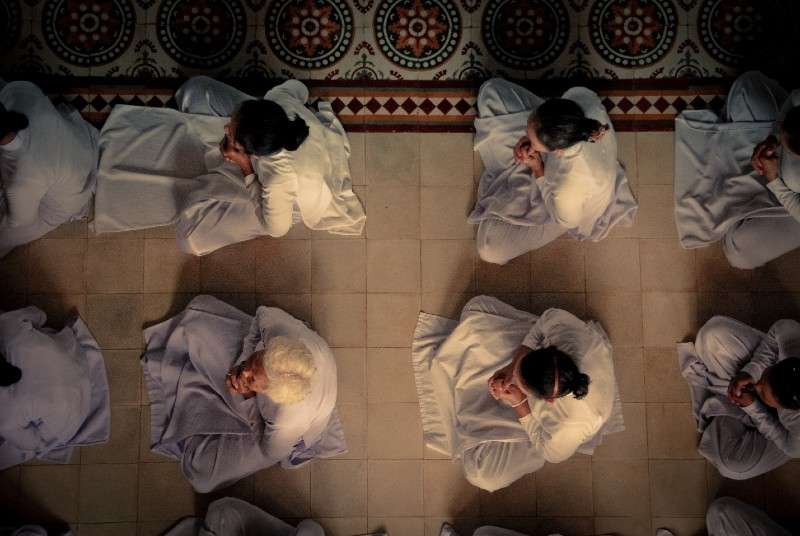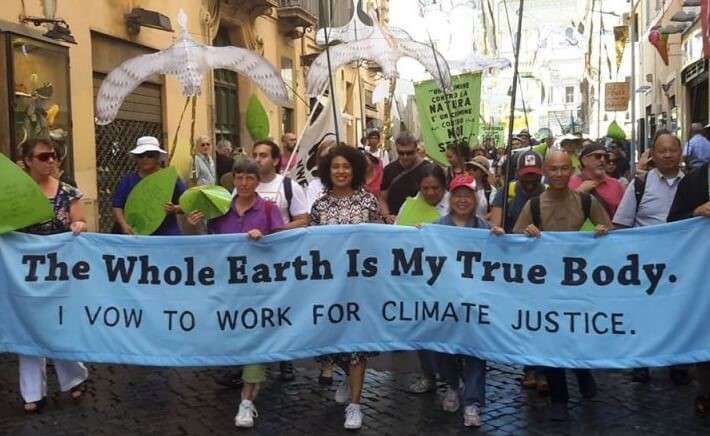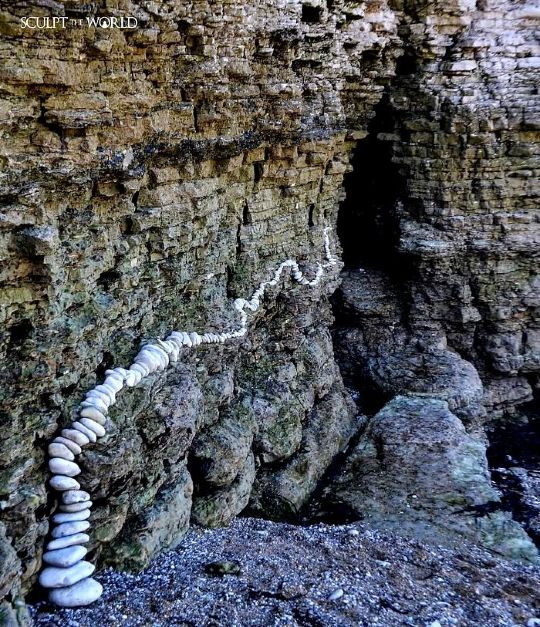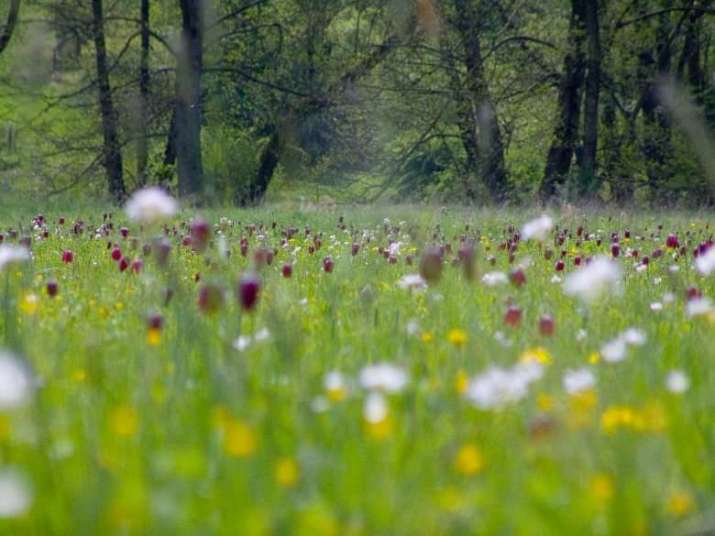
The urgency for working to reduce and reverse climate change has never been as poignant as it is right now as the United States returns to the Paris Agreement on climate change after four years of irresponsible nonmembership. There is no country in the world, especially for marginalized peoples and animal species, where climate emergencies are not affecting lives and communities in destructive ways. As Buddhists or meditators, many of us are asking: how can I make the best use of my time, energy, and attention to have a positive influence on these dire issues?
We can all find ways in our own households and communities to make small differences that add up. In larger ways, whether or not we are drawn to social or political action, we can engage in this very serious arena with heartfelt awareness and compassion. Even if we consider ourselves activists only from our meditation cushion, it is important to read and educate ourselves on what is happening in the world so that we can connect in specific ways to the suffering of beings for whom we pray and practice.

More than a few of us feel a sense of grief and anxiety over what is to come. As meditators, we feel that we must have at least one foot in the public forum while keeping one firmly rooted to our meditation cushion so that we don’t lose a key component of our bodhisattva vows: bodhicitta, the mind of awakening, as we strive to benefit others. And many Buddhists and other spiritual practitioners feel the need to engage in protests, education, politics, or our social environments in support of climate justice and advocacy for the planet and all her creatures. As many of us have said or written, prayer alone is simply not enough. We can turn our grief, depression, and anxiety into hope through engagement. Influencing local and national politics is imperative:
Hundreds of millions of lives hang in the balance with every half degree of warming we either enable or avoid. Before [this past decade] . . . there was really no cohort in the governments of the wealthiest countries on the planet willing to entertain this kind of emergency approach to the climate crisis. There is now a bloc of politicians in the United States, Europe, and elsewhere, some just a decade older than the young climate activists in the streets, ready to translate the urgency of the climate crisis into policy, and to connect the dots among the multiple crises of our times. (Naomi Klein)*

Whether or not we have children of our own, all the world’s children should be our concern. It is the youth who are most active and concerned about the effects that the climate crisis is already having on their present and future lives. In addition, clergy and practitioners of many faiths feel a strong desire to participate in the public forum—yes, even during a global pandemic, perhaps even more so—to positively influence climate outcomes for everyone’s health and survival, the world’s children, animal species, and habitats. The spiritual path is meant to be taken not only in isolation, but in community, and for this we have temples, churches, synagogues, and other spaces in which to gather. Even if these are on hold for now, in our hearts and minds we are gathered in solidarity for our future as a species.
It is here, in the collective depth of this world, where we grapple and struggle and gather to dance, where we grieve harrowing losses and then stand, shoulder to shoulder, to protect children and battered refugees and to safeguard the wild flourishing beauty that remains. It is here, and the improvisational state of the real, that we must practice our spiritual work. (Joanna Macy)**

It is very heartening to see that world leaders of various religions and spiritual paths are vocal about our need to attend to the climate emergency through personal and collective action in addition to prayer. In his book Our Only Home: A Climate Appeal to the World, His Holiness the Dalai Lama sets forth his views on how we Buddhists must engage our compassion in action, citing the vital example of Greta Thunberg as an activist youth leader for our times.
Pope Francis, in his encyclical Laudato Si’, and Cardinal Turk are also very outspoken and hard at work delivering the message from the Catholic Church about caring for the Earth, about investing our energy and commitment in their speeches and written work. There are seven spiritual Works of Mercy outlined in the Gospel, and in 2016 the Pope Francis asked that care of the environment be added to this list as an essential act of mercy toward the planet and its inhabitants, especially the poor and refugees.

In Tibetan Buddhism, the phrase no chu means the container and all that is contained—literally the universe and its inhabitants. This is exactly what the Dalai Lama and Pope Francis are referring to when they speak about our earthly environments and all creatures contained therein. This is the interdependence at the heart of the Buddhist doctrine. Humankind is intricately interwoven with the Earth, for better or worse. Let the healing begin with each one of us, in all the ways we can imagine and muster.
All children deserve a present and a future in which to dream, dance, learn, and grow. One in which they feel the magic of their surroundings, vibrant with the companionship of many species of flora and fauna:
I keenly remember a favorite childhood meadow, forest-encircled, the humid silence saturated with the clicketing hum of crickets, a sense of stillness in which anything was possible. Safe in dense, sunny, wild-flowered expanse, with an array of animal and insect life, or beneath the night-blanketing sky . . . (Sarah C. Beasley)***

May all our steps on the Earth, at work, at play, in protest, in loving support, and raising up our voices as well as our prayer, our sitting, our stillness on the cushion, be used as means toward healing for the Earth, and all her variety of inhabitants, from the mighty to the miniscule.
This holy Earth is far too wondrous to be fathomed or figured out by us. The erotic richness of the more-than-human world invites us always deeper into vital intimacy and participation with the rest of the Real—drawing forth our tears at the compounding wounds while engendering an astonished exaltation at finding ourselves immersed and participant in so much mystery, willing to risk everything for its continued flourishing. (Joanna Macy)**
* Klein, Naomi. 2019. On Fire, The (Burning) Case for a Green New Deal, New York: Simon & Schuster.
** Macy, Joanna. 2020. A Wild Love for the World. Boulder, CO: Shambhala Publications.
*** My Grandmother’s Greenhouse and Other Portals to Wonder (Buddhistdoor Global)












